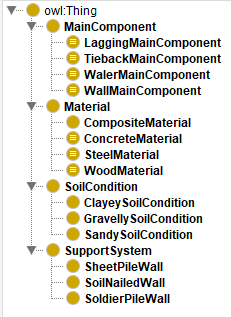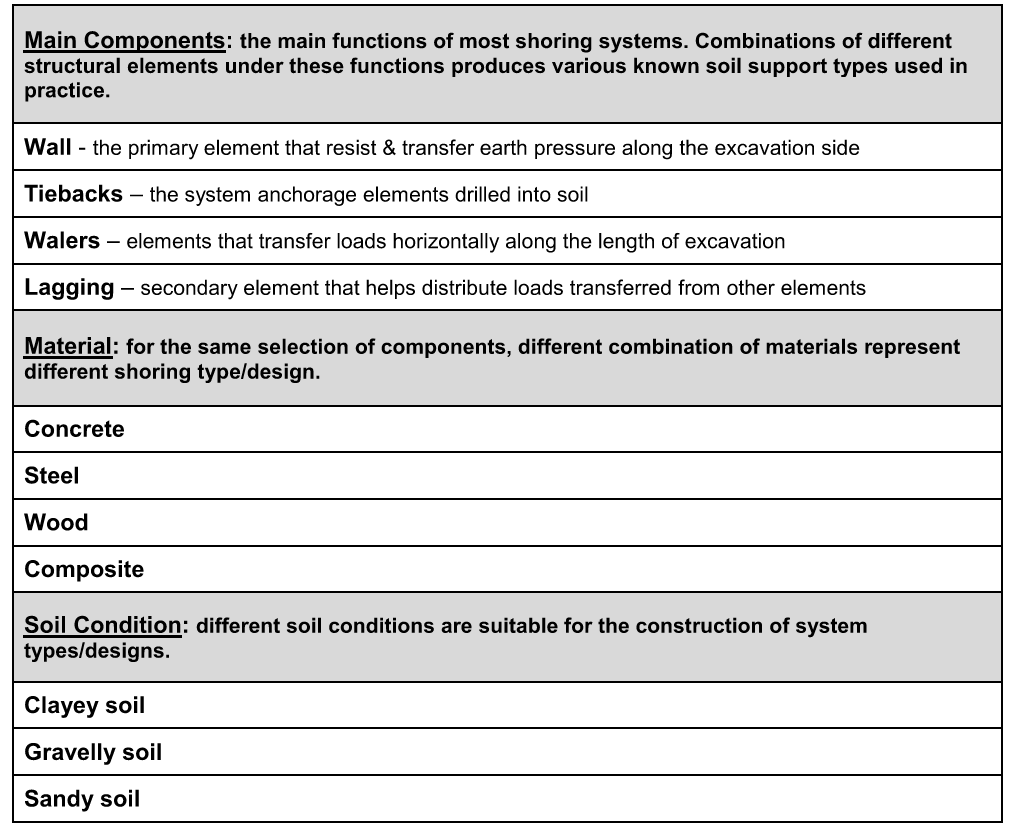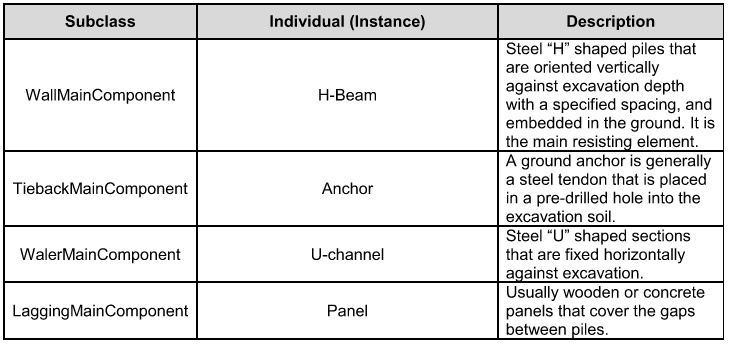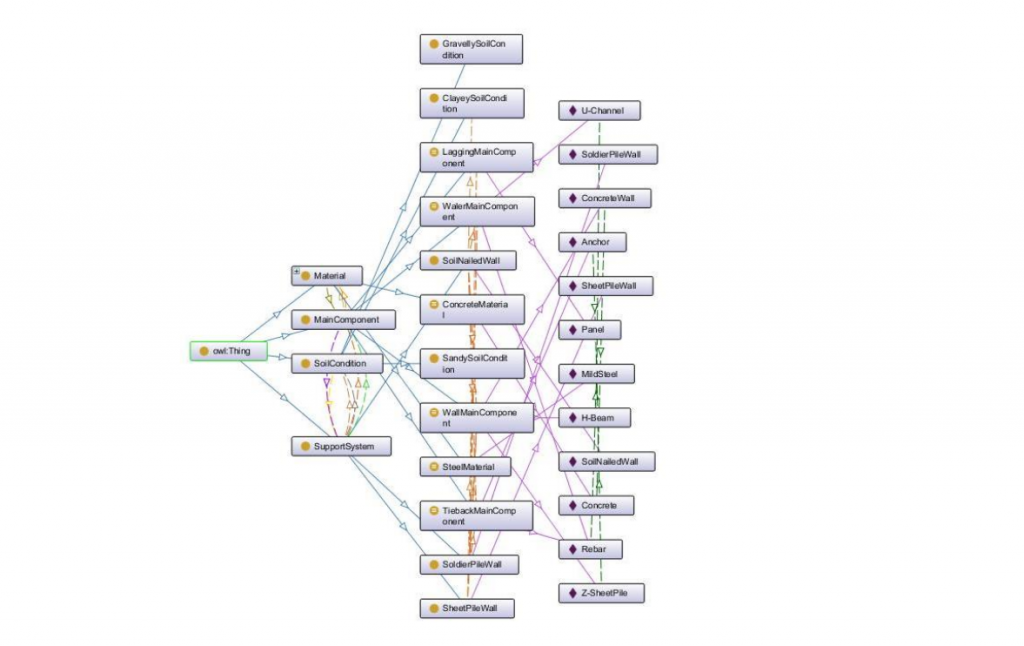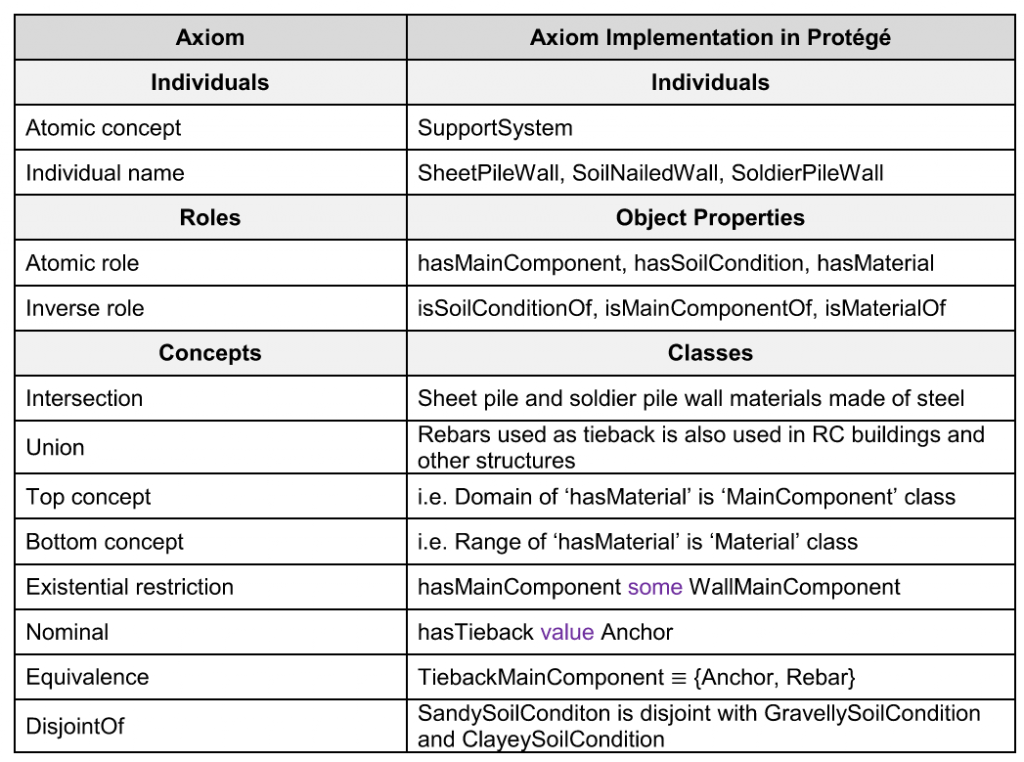Background
Excavation support is a soil-retaining structure used in constructions that involve deep excavations, generally more than 3-4m of excavation height. This structure is often temporarily constructed in top-down construction for safety purposes during the temporary stage.
Ontology
The ontology has been independently developed with a top-down approach as shown in the figure below.
Figure 1: Ontology top class
The main categories are classified and contribute to the ontology as shown in the below table.
Table 1: Categories and Classification of Excavation Soil Support System.
For simplicity, only three design examples of shoring systems were considered, which are: “Sheet Piles”, “Soldier Piles” and “Soil Nailed Walls”. Moreover, to illustrate the next stage of ontology development, the starting point for establishing relations began by experimenting with the ontology as a user, with the following criteria:
- Each support system has unique set of physical elements, which are classified according to their structural role (behavior); whether they act as a tieback, waler, lagging or a wall (primary member).
- After including physical elements as ‘instances’ or ‘individuals’, each one is then given a material property from Material sub-classes. If support systems do not necessarily change with the change of material for a component (such as lagging), they are given more than one material property.
- Finally, to each support system, the applicable soil conditions were given.
The classification procedure of soldier piles exemplifies the ontology of one support system.
- Data property assertions were given to soldier pile wall to differentiate between designs in terms of general application in practice as shown in below figure.
Figure 2 Property assertion of Solidier Pile Wall
- Individuals representing the main components are created in the following table. Where each is given an object assertion to specify their material in addition to one data property assertion.
Table 2: Components of Solider Pile Wall
The final model represents the ontology in the below figure.
Figure 3: Final Ontology
Logical Axioms:
The relations in the ontology used axioms are summarized in the below table.
Table 3: Summary of Axioms
LITERATURE:
Zhang, Wen’gang; Liu, Hanlong. “Design of deep excavation and earth retaining system under complex built environment”. Chapter 1: Overview; p.5. [1]
Barham J. Nareeman & Asmaa Abdulmajeed Mamhusseini. “Design and Construction of Deep Excavations”. Eurasian Journal of Science & Engineering, June 2020, Vol.6, Issue 1.
U.S. Department of Transportation; Federal Highway Administration (FHWA), 2015. “Soil Nail Walls Reference Manual”. Publication No. FHWA-NHI-14-007. FHWA GEC 007.
Deep Excavation LLC. “Support Systems for Deep Excavation”. [https://www.deepexcavation.com/en/resources/excavations-support-systems]
Michael Diez de Aus, 2016. “How Tiebacks, Rakers, Struts Support Shoring walls”. [https://skyrisecities.com/news/2016/12/how-tiebacks-rakers-and-struts-support-shoring-walls].
